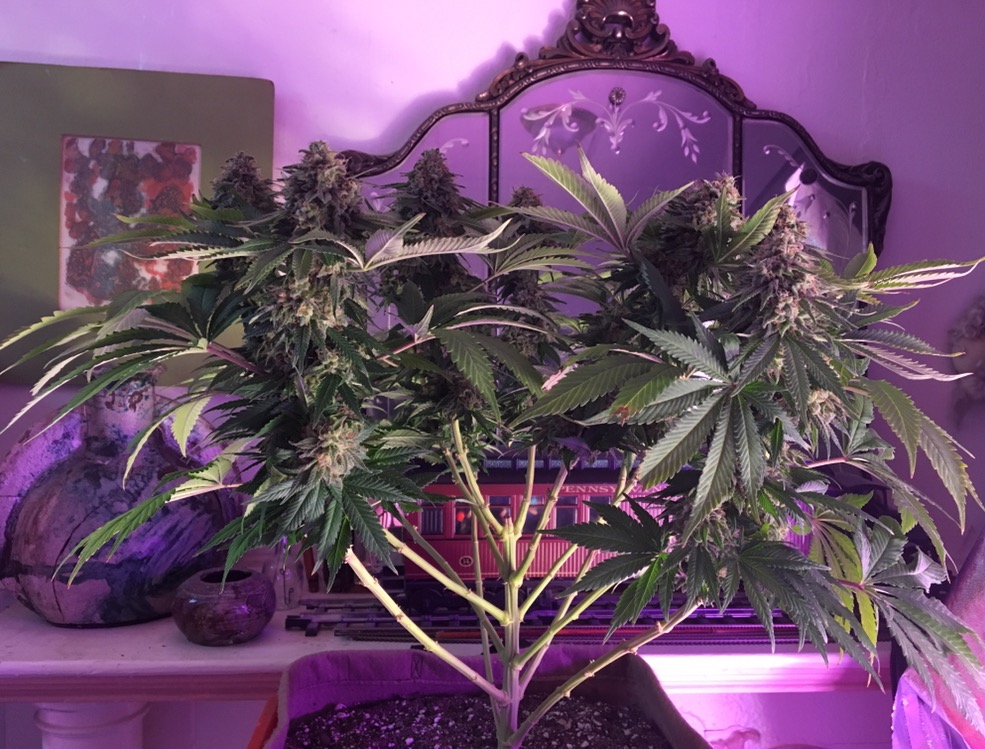- Thread starter
- #7,301
Let's take a breath and gain a little clarity here, OK?
First off, our tap water is tested. We kinda insist on that little detail.


Tim Wilson, also affectionately referred to as "Microbe Man," has devoted countless hours of his time researching microbes and their interaction in soil, with a special eye to aerated compost teas. If you want to know about teas, Tim's your man.
He's also taken the time to determine what is necessary to do to counteract the chloramines added to our water. They will impact the health of your soil, but they are easily neutralized with the simple addition of some organic material.
I choose to use BSM. There's a great misunderstanding about BSM. It's much more than simple sugar, and contains a wealth of micronutrients that benefit the micro herd, even in this small quantity. If I'm using something to nutralize my water it makes sense to me to make that something beneficial. There is nothing detrimental being done to my micro herds with my minuscule addition of two tiny drops of BSM to each and every gallon of water I use.
From Tim himself:

Last, but not at all least, a gentle reminder that my use of tap water neutralized by this small addition of BSM has not killed anything I've grown, nor has that been the cause of any problem I've had with my latest soil mixes.

I'm still learning. Coming at someone who's still learning and managing to keep the plates spinning even when things get dicey might not work so well on someone not as strong, loving and forgiving as I am Duggan. We're gonna talk about some gentle ways to make your points without scaring people away.
You have a great gift for growing and your passion for the system draws us to you. We need to find ways to express that passion that attract more to your brilliance. I'll never stop seeing it, regardless of the explosiveness of your reactions at times. I find you endearing. Someone more sensitive........ maybe not so much.

First off, our tap water is tested. We kinda insist on that little detail.



Tim Wilson, also affectionately referred to as "Microbe Man," has devoted countless hours of his time researching microbes and their interaction in soil, with a special eye to aerated compost teas. If you want to know about teas, Tim's your man.
He's also taken the time to determine what is necessary to do to counteract the chloramines added to our water. They will impact the health of your soil, but they are easily neutralized with the simple addition of some organic material.
I choose to use BSM. There's a great misunderstanding about BSM. It's much more than simple sugar, and contains a wealth of micronutrients that benefit the micro herd, even in this small quantity. If I'm using something to nutralize my water it makes sense to me to make that something beneficial. There is nothing detrimental being done to my micro herds with my minuscule addition of two tiny drops of BSM to each and every gallon of water I use.
From Tim himself:

Last, but not at all least, a gentle reminder that my use of tap water neutralized by this small addition of BSM has not killed anything I've grown, nor has that been the cause of any problem I've had with my latest soil mixes.

I'm still learning. Coming at someone who's still learning and managing to keep the plates spinning even when things get dicey might not work so well on someone not as strong, loving and forgiving as I am Duggan. We're gonna talk about some gentle ways to make your points without scaring people away.
You have a great gift for growing and your passion for the system draws us to you. We need to find ways to express that passion that attract more to your brilliance. I'll never stop seeing it, regardless of the explosiveness of your reactions at times. I find you endearing. Someone more sensitive........ maybe not so much.










 Doesn't seem significant.
Doesn't seem significant.

